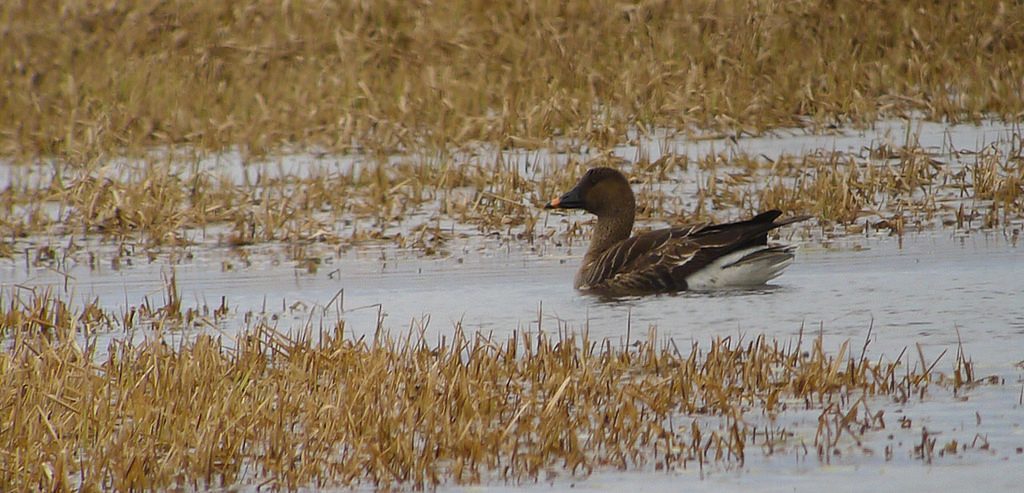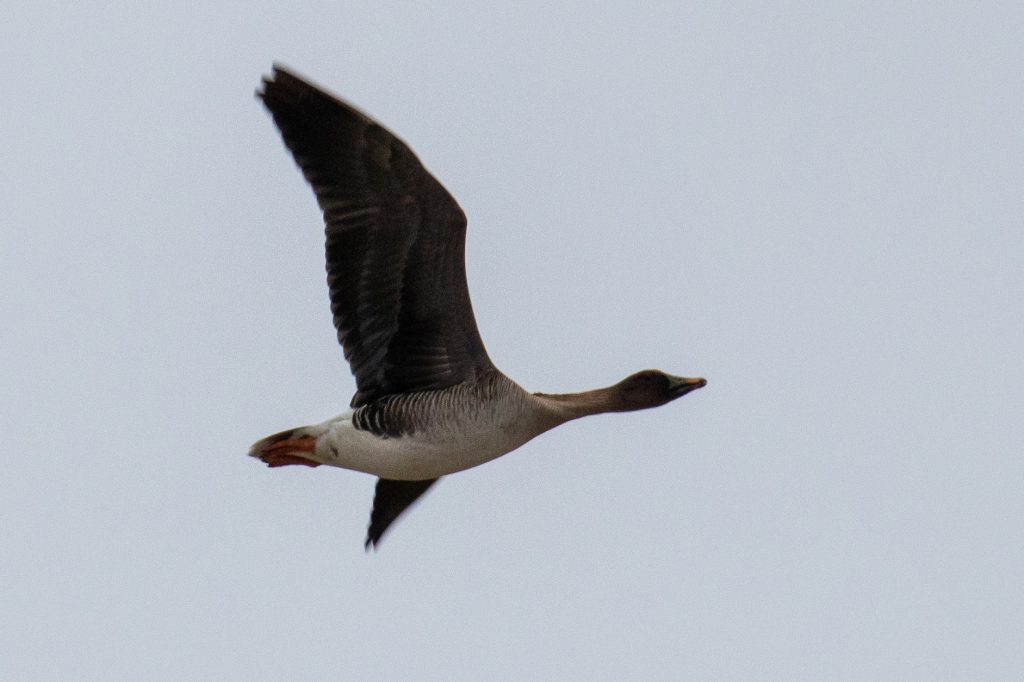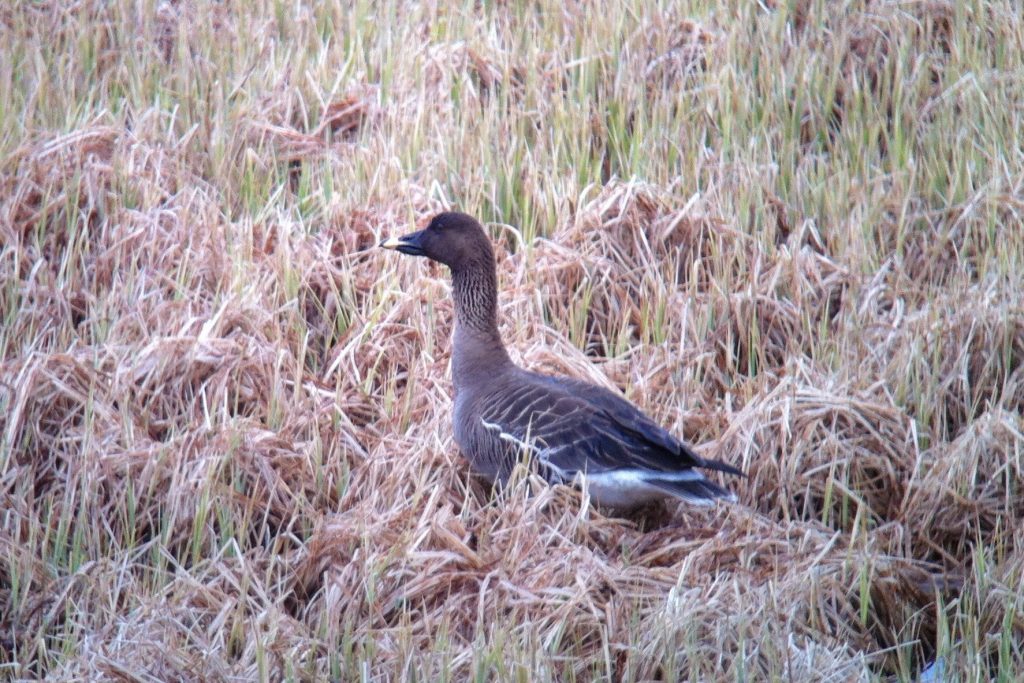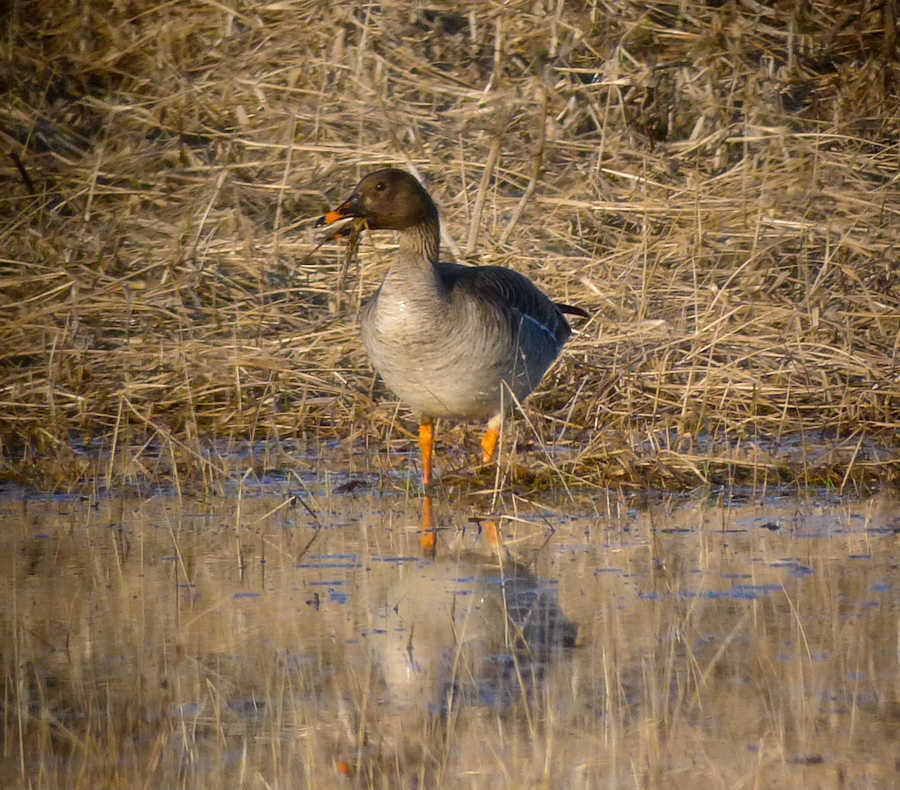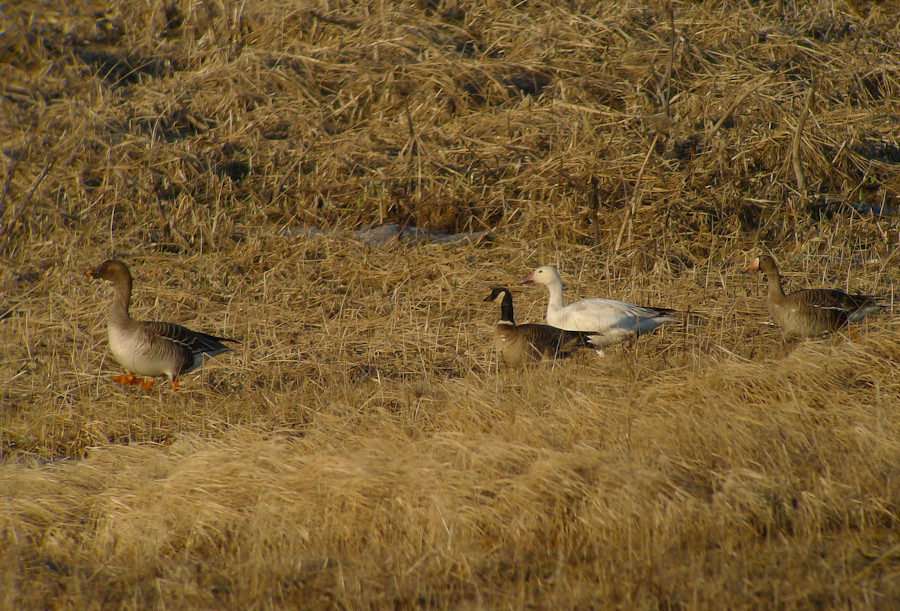A vagrant goose which is not expected, though somewhat regular during the spring. It has occurred in the islands every few years since the 1990s, with nearly all of the known records being from the second half of May. This is considered to be the more expected bean-goose within Alaska and does outnumber its congener in records for the islands, though not to a large degree. However, there has never been a local record of more than one individual unlike the Taiga Bean-Goose, which has been seen in twos and threes on St. Paul Island previously. The tight clustering of records in mid-May is notable with very few outliers while further coverage in the fall (mid-September to mid-October) will likely lead to additional records at that time period.
